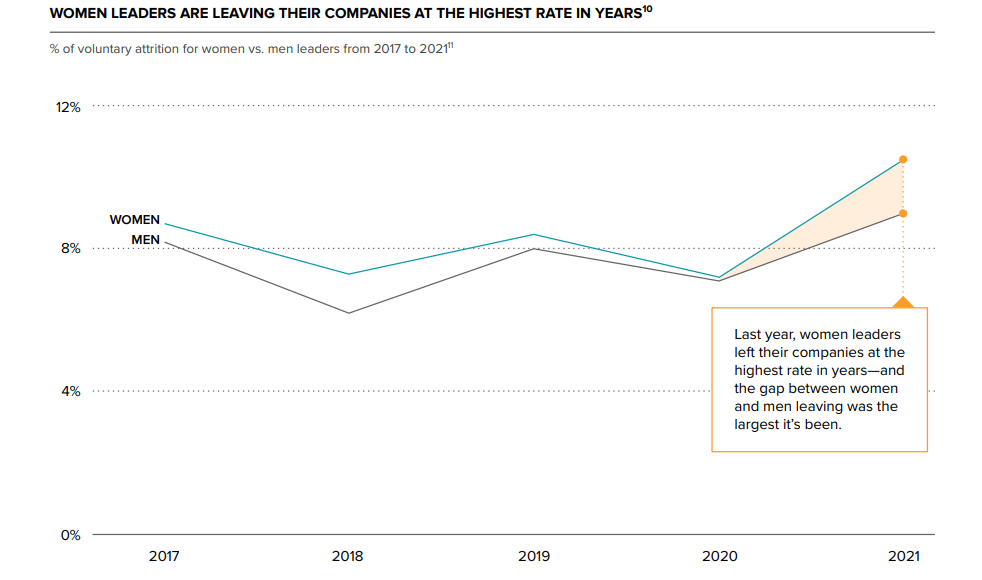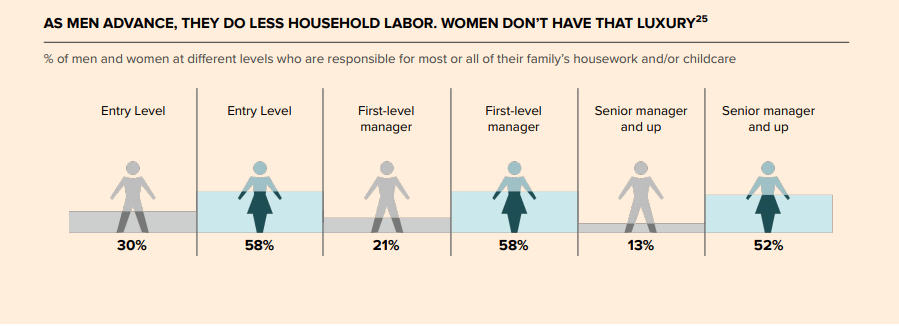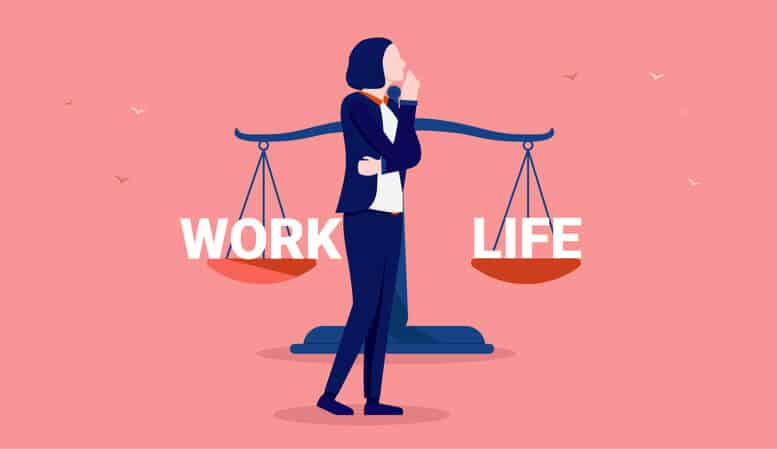Employers shouldn’t turn their backs on this turnover tsunami among women.
Only a few short months ago “The Great Breakup” dominated headlines after McKinsey & Company’s annual Women in the Workplace report revealed that women leaders are leaving their jobs at an unprecedented rate.
But we haven’t heard much more about The Great Breakup since then, and that’s unfortunate because it’s still very much underway and showing no signs of slowing down.
Turnover Tsunami
In 2021, women left their companies at the highest rate in years, making the turnover gap between women and men the largest in recent history.

Women in the Workplace Report, 2022
“To put the scale of the problem in perspective: for every woman at the director level who gets promoted to the next level, two women directors are choosing to leave their company,” McKinsey & Company write in their report.
Why It Matters
The Great Breakup is bad news for businesses because women leaders bring significant advantages to the workplace.
Research has shown that companies with female CEOs are more profitable, innovative and socially responsible.
And that organizations with more women in management roles outperform their male-led peers.
Additionally, inclusive teams make better business decisions up to 87% of the time, and teams with less diversity are more likely to make poor choices for their company, according to research.
All this to say, when employers lose women, especially in leadership, they become less competitive, less creative and less innovative.
Recommendation
To reverse The Great Breakup, companies should focus on two broad goals: getting more women into leadership and retaining the women leaders they already have, according to McKinsey’s report.
To reach these goals, companies may want to consider tackling the biggest reason women are seeking greener pastures in the first place.
Reduce Work-Life Conflict
A top reason women leaders are breaking up with their employers is work-life conflict, according to McKinsey & Company, or what is popularly referred to as the “double burden.”
The term double burden refers to the workload of people who work to earn money and are also responsible for significant amounts of unpaid domestic labor.
“While women at all levels are far more likely than men to be responsible for most of their family’s housework and caregiving, this imbalance is even greater at a leadership level,” the report reveals.
McKinsey found that among entry-level employees, women are about twice as likely as men to be doing most of the unpaid domestic labor; among employees in leadership, the gap nearly doubles.

Women in the Workplace Report, 2022
In fact, 70% of top male earners in the U.S. have a spouse who stays home, whereas 78% of top female earners do not, according to new peer-reviewed research published by the American Sociological Review.
Understandably this unbalanced dynamic is wearing women out, especially those at the top.
But instead of digging their heels in to compete with their male peers, as they have done in the past, women are simply switching jobs.
And they’re going to organizations that offer greater work-life balance, better benefits, and, most importantly, work-life support, even if it means taking a pay cut.
With so much on the line, why have employers been so slow to react?
It may be because the double burden has been burdening women since they began joining the workforce.
Consequently, many leaders may be asking themselves what makes this moment different.
And the answer to that is women’s perspectives.
What Makes This Moment Different
Women have come to expect more out of work.
The pandemic and the state of permacrisis that followed have revolutionized the way women think about their careers and their personal lives.
Quality of life and well-being have taken on greater value than the traditional markers of success, making women leaders more willing to move on if their company can’t match their revised value system.
Additionally, during the pandemic, women gained more flexibility, including the opportunity to work from home.
And more employers invested in the types of benefits women, particularly working moms, had been dreaming of for decades: child care and caretaker benefits, work-life balance perks and more mental health resources.
In short, employers have shown women they can do more to resolve work-life conflict.
Women have come to know what it’s like to have extra support from their employers.
A new precedent has been set, and there’s no turning back.
If employers want to turn The Great Breakup into The Great Reconciliation, they should consider targeting work-life conflict, the primary culprit of turnover among women.
Companies offering benefits at every level of their organizations that enhance work-life balance will attract and retain more talent and strengthen their female leadership pipelines.
COVID-19 may be fading away, but the cultural zeitgeist it ushered in isn’t going anywhere. The future of work is here, and innovative organizations will capture the moment by investing in women.



